If you walk down the long boulevard of Chernivetska Street from the grand Lviv Railway Station, you reach a chaotic roundabout. Avoiding the trams, cars, buses and motorbikes which duel at this intersection, a left turn will bring you onto busy Horodotska Street. If you head down the hill and follow this main thoroughfare far enough, you’ll end up at the Lviv National Opera on the edge of Old Town. It’s a straightforward route that I know well after many visits to the city. When I arrived from Poland yesterday it was warm and sunny, and I worked up a sweat lugging my gear along the familiar walk. Thankfully I didn’t have to go all the way downtown, with my apartment located just off Horodotska Street not far from the Station.
Visitors who have spent time in the country since Russia’s 2022 invasion often speak of the ‘two Ukraines’; the frontline towns and cities to the east, and the relatively safe regions to the west. Superficially, cities like Lviv seem quite normal. Residents go about their lives, attending school, university or work, and the cafes and restaurants inside the Old Town district buzz with activity. As I headed down Horodotska Street, the city looked typically relaxed.
My apartment was opposite a school, and I could hear the burble of children coming from inside the multi-story block. It’s the first week back after summer holidays, and I can imagine the teachers were struggling to get the kids to focus. At street level, the school’s basement windows had been boarded up and reinforced with sandbags.
Later that evening, I realised I hadn’t heard an air raid siren since I had arrived. Although attacks are uncommon in comparison to eastern cities, air raid warnings can be relatively frequent. Any incoming Russian drones or missiles on a possible flight path to Lviv are enough to trigger the alarm. Assuming Lviv was still as quiet as it had been during most of my visits, I went to bed and quickly fell asleep.
I was woken by what sounded like some kind of dreadful musical round, as multiple air raid sirens across the city rose, held pitch, then descended out of sync. I checked the time: 0400. As I lay there, I remembered that the objective of Russian strikes is to disrupt civilian life, which is why they favour night-time attacks. I then wondered if the sirens would stop, or whether explosions would add to the cacophony. The answer came soon enough.
A series of loud bangs were followed by the barking of dogs and the sounding of car alarms. From my limited experience, they sounded reasonably close. I checked the phone for updates; there was a list of live warnings for Lviv, and the overall map of Ukraine showed strikes were expected right across the country. Lying in bed, I lost track of time. I’m not sure how long the raid lasted. At one stage I heard whistling sounds, followed by two explosions. I wasn’t sure whether this was Ukrainian Air Defence shooting down drones, or the Russian weapons exploding having evaded the defenders. Sometime before dawn, I managed to fall into a restless sleep.
Upon waking, I opened up the laptop and checked the latest news. Ukrainian agencies were reporting that residential buildings near the Lviv Railway station had been hit, and that strikes across the city had killed three and injured 25.1,2 After a quick breakfast, I walked back towards the station. I was a little self-conscious, not wanting to be seen as a ghoul or rubbernecker. However I felt that as the strike had happened in ‘my neighbourhood’, I had some right to see what had happened. Besides, I wasn’t even sure if I would find the place where the drones or missiles had landed.
Before reaching Chernivetska, I turned into a residential street and headed north. I saw police lights, and thought I might be on the right track. There were people milling around up ahead, and as I got closer, I saw the police had taped off the street. Seeing other people standing and watching, and taking photos with their phones, I felt ok about going for a closer look.
The cars parked along the street were covered in a fine grey dust, and some had chunks of masonry up to basketball-size sitting on their roofs or bonnets. Many had smashed windows and windscreens. A young woman sat motionless on the kerb beside her damaged car, her chin resting on her hands.
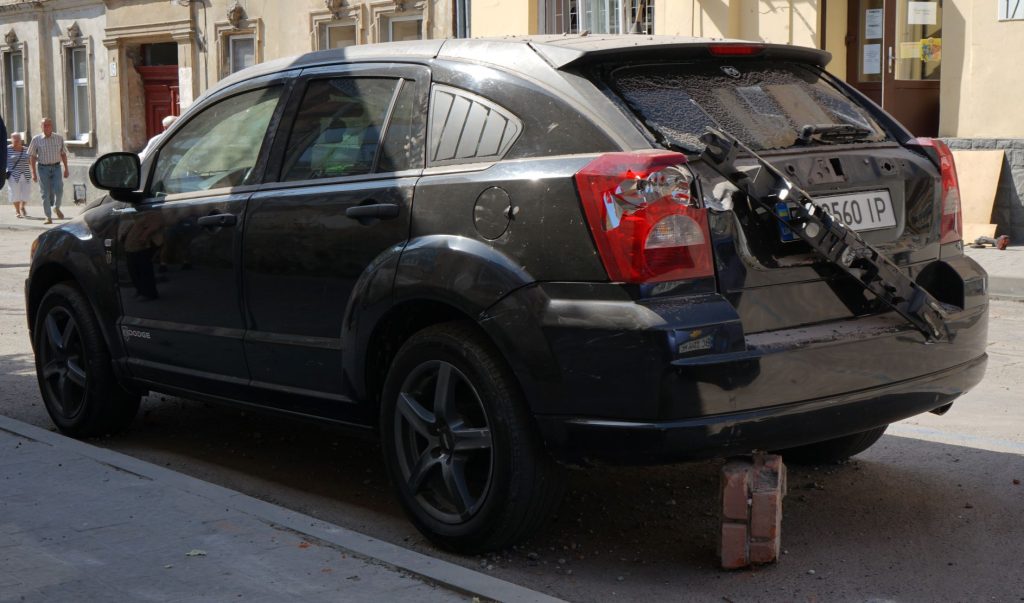
In the gutters, debris had been swept into neat piles. People were removing broken glass from their sills, floors and balconies, with windows having shattered up to hundreds of metres away from the impact point. In a side-street I saw a family piling suitcases and bags into a car. I wondered if they had just lost their home.
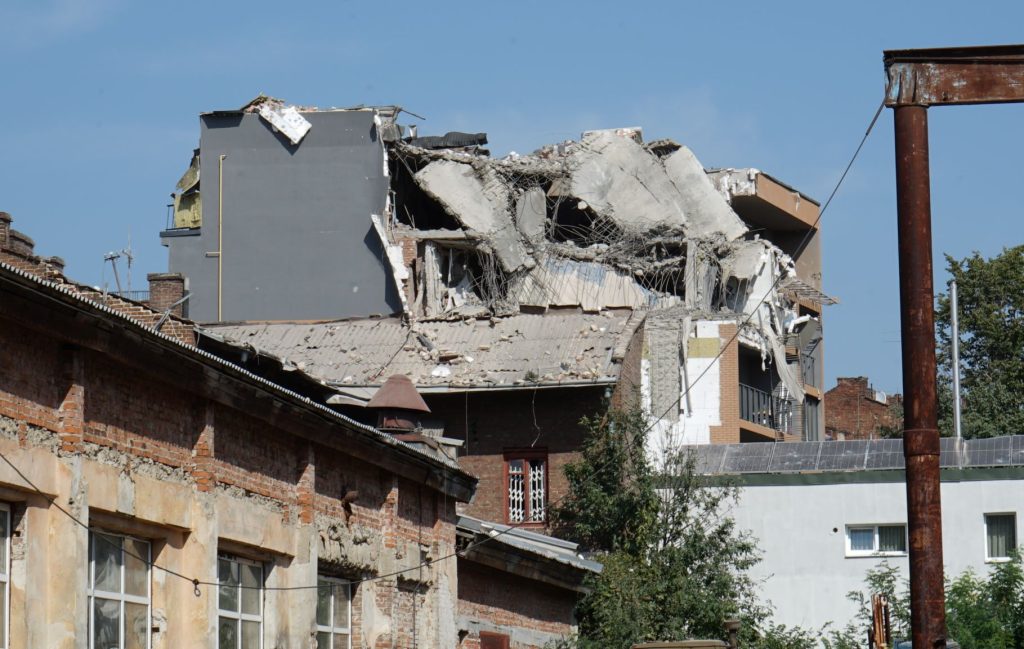
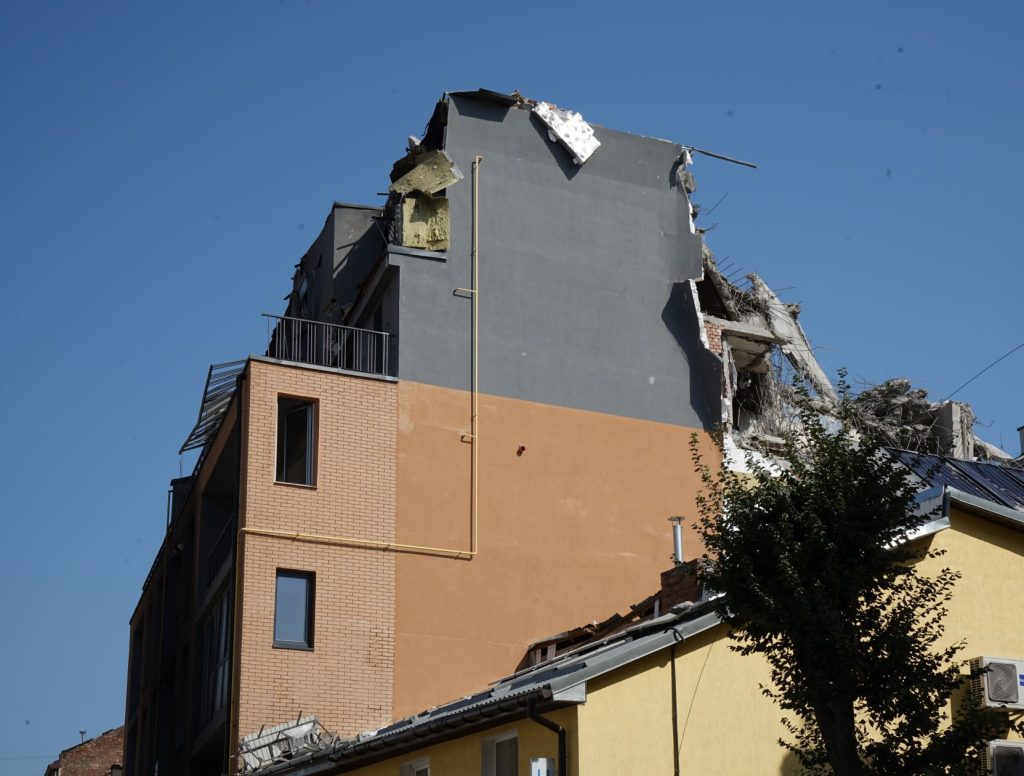
Reaching the police cordon, I could see one of the buildings that had received a direct hit. A large section of its top storey had been destroyed, and burnt out cars sat on their rims in front of the building.
Two loaders roared up and down in the dust, scraping up the remains of people’s homes and dumping them into a skip. Although the fires caused by the strike had been extinguished many hours ago, downwind from the destruction there was still a smell of smoke and burnt plastic.
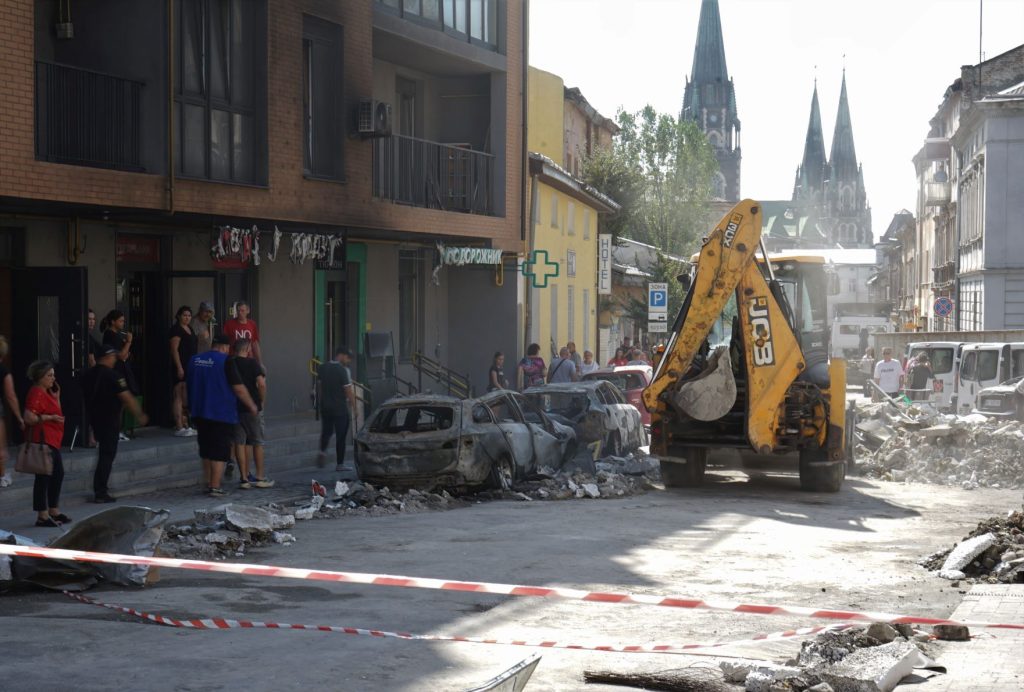
Residents ducked under the police tape, along with older men in high-vis vests carrying shovels and brooms. Members of the Ukrainian Armed Forces stood in small groups on the street corners, and staff from various support agencies hurried around in their brightly- coloured uniform polo shirts.
I turned down a road to skirt around the blockade, then re-joined the street further north. A second line of police tape was keeping onlookers away from another row of smashed cars and a building with a roof reduced to splinters. At street level, I passed a large window frame, from which shards of glass hung like stalactites. Glancing in, I saw an older lady lying in bed, talking on the phone as she cradled a small dog.
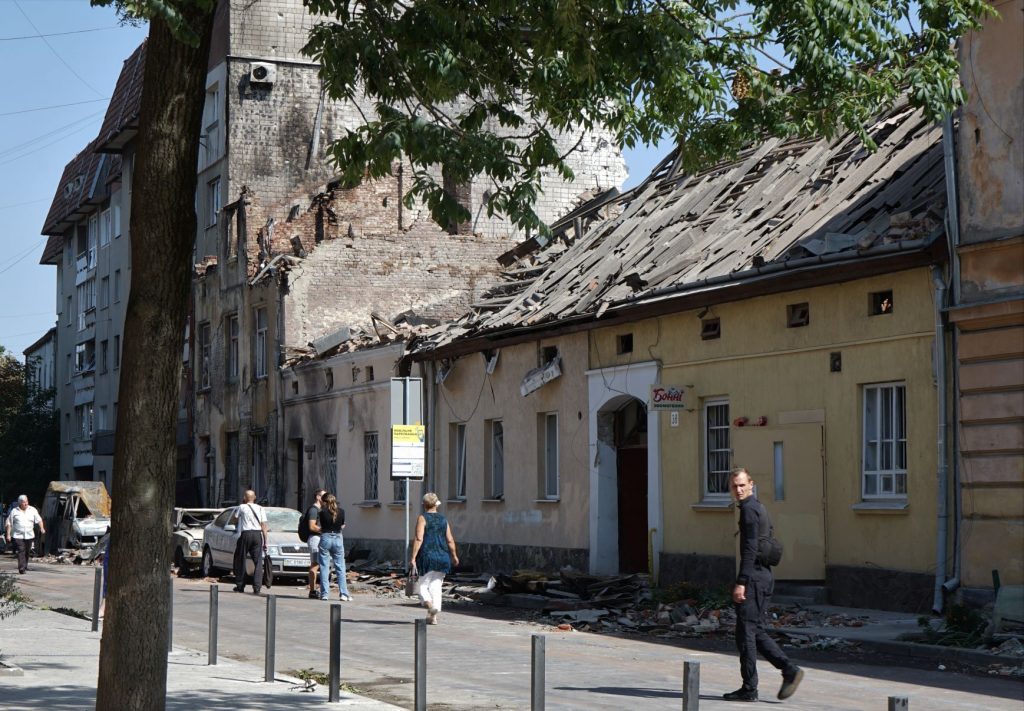
Leaving the scene of the attack, I turned back towards home. I wondered how many other streets across Ukraine were also cleaning up after the Russians had destroyed their homes and killed their loved ones.
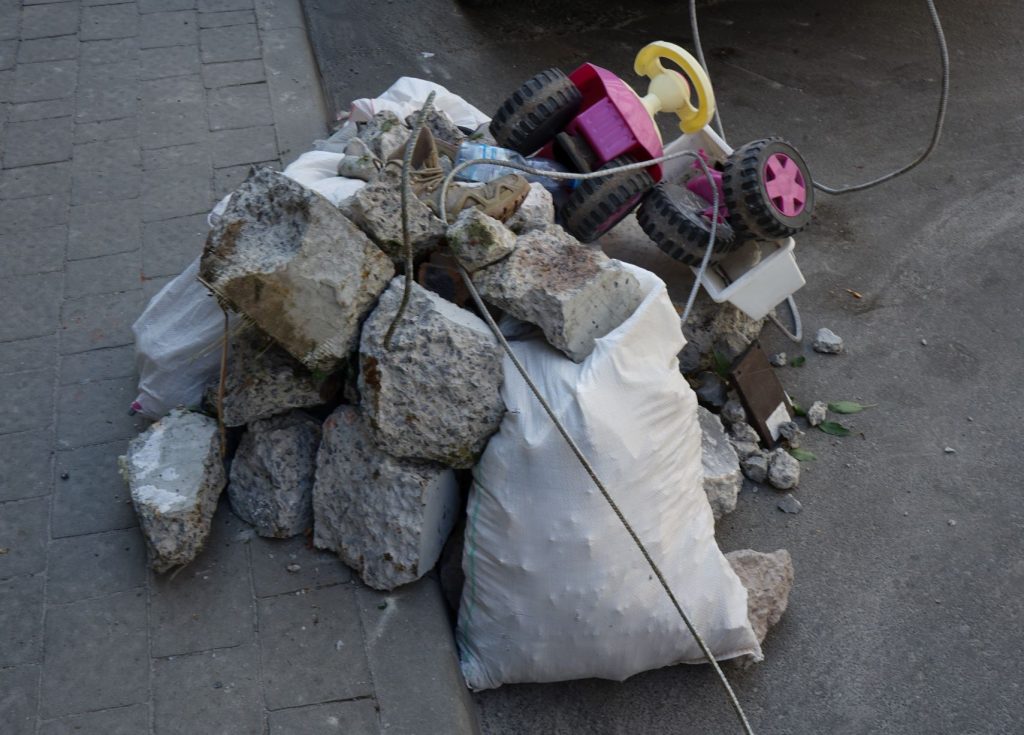
When I checked the news again this evening, more details had emerged about this morning’s strikes on Lviv. A mother and her three daughters, two of which were children, had been killed in their home; her husband being the only survivor. Lviv’s total of seven fatalities also included a baby and another girl.3 A further 35 people had been injured and 70 buildings damaged.4
Tomorrow morning, maybe all the kids will turn up to the school across the road from my apartment as if it’s just another day. But somewhere in Lviv, three little girls will be absent from class, having not even had the chance to make it to the end of the first week of school.
I certainly didn’t expect a raid on my first night back in Ukraine, far away from the front lines where things seemed ‘normal’. Although air strikes on Lviv are still relatively rare when compared to eastern cities, war still comes to the quieter of the ‘two Ukraines’.
1Ukrinform, 2024, ‘Strike on Lviv: three dead, 25 injured, residential buildings ablaze‘
2Serohina, K., 2024, ‘First details about consequences of Russian attack on Lviv: Damaged building and casualties reported‘, RBC Ukraine
3Kirby, P., 2024, ‘Mother and daughters killed in new wave of strikes on Ukraine‘, BBC News
4France 24 English, 2024, News Bulletin 04/09/2024
If you liked this post, you may also enjoy Deadly harvest, Mud and Memories
Leave a Reply